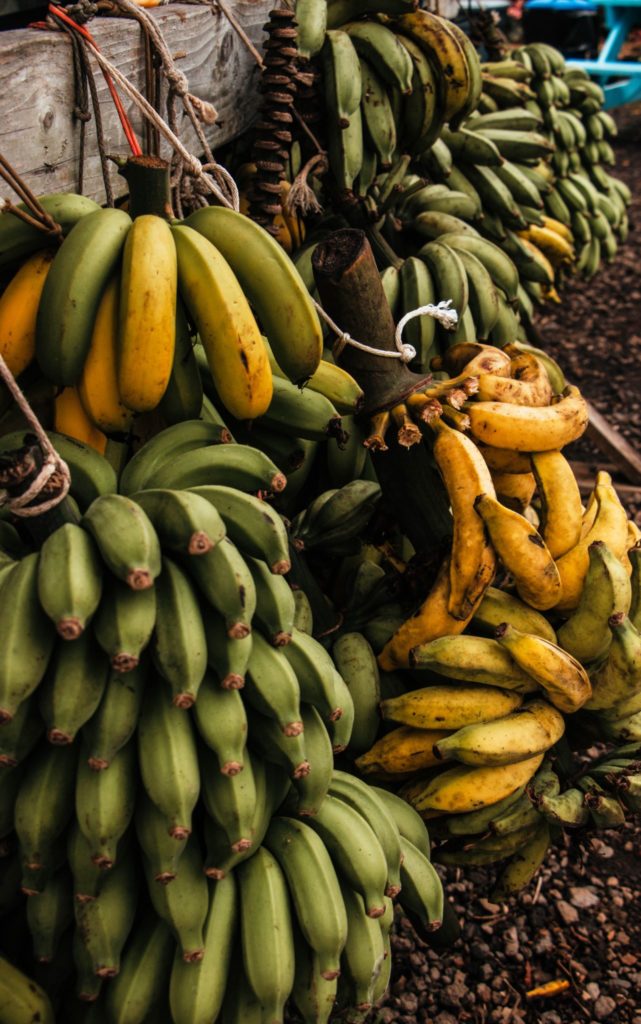Fashion meets science. Or food? Or both?
This year has uncovered an array of innovators and companies in a hurry to change the destructive cycle of the fashion industry.
With this movement towards more sustainable production and sourcing, some companies are using an unlikely but clever source – food waste. Both progressive and resourceful, food waste including banana by-product, coffee beans, hemp stalk and pineapple leaves can be collected and spun into a natural fibre and then used for textile production– mind blown!

Coffee beans to textile
Look no further than Taiwanese company Singtex which invented and produces a yarn made from coffee beans and plastic bottles. The highly developed yarn called S.Cafe, is environmentally friendly, de-odorizing and fast drying – perfectly designed for high performance wear. It’s no surprise that brands like ASICS, Brooks and Patagonia incorporate Singtex products into their own products.
Food crop waste to fibre
The US based start-up, Circular Systems is a new materials company, which is revolutionising the textile industry. Seeing the significant impact that crop waste has on the environment, the company could see the value in the waste, and converted it into a resource. The start-up now provides three technologies that transforms crop waste and textile scraps into new fibres that can be used for textile production.
Pineapple leather
Elsewhere in the Philippines, Dr. Carmen Hijosa, founder of Ananas Anam, has developed Pinatex. Made from the fibre of pineapple leaves that has been discarded during harvest, Ananas Anam developed the first automated decorticating machine to assist with the extraction of long fibres from the leaves. The fibres undergo an industrial process to become non-woven mesh, which forms the base of Pinatex. The finished product is a textile that is soft and flexible, yet durable, with a leather-like appearance.
It’s clear, changes are being made. The future of fashion innovation has to be responsible, and it’s clear from the incredible innovations from these pioneers, that the solution could very well be in the one of the biggest industries on earth – food. Who would have thought?